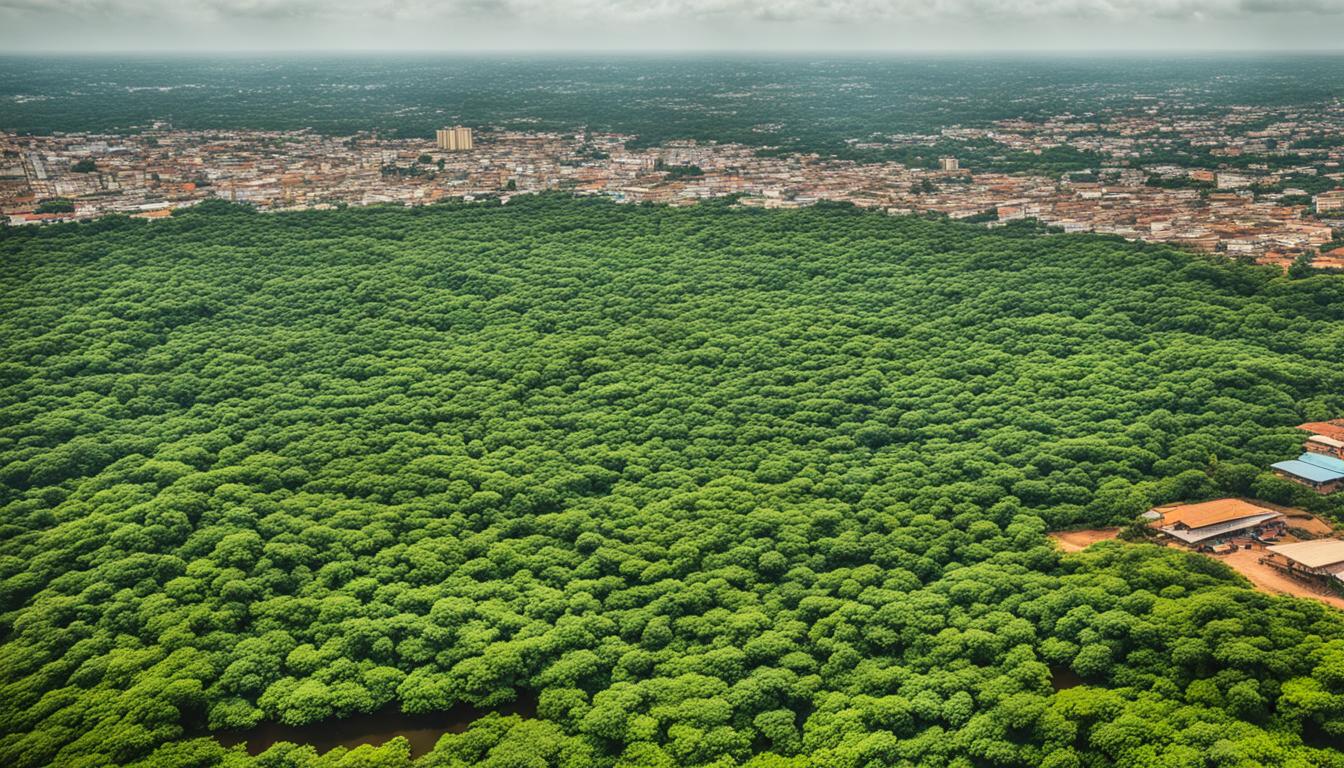Belgium Biodiversity and the Built Environment
Belgium is a country with a rich biodiversity, boasting a remarkable variety of animal and plant species. However, the survival of this diverse ecosystem is under threat from habitat loss, pollution, climate change, and invasive species. The conservation of Belgium’s biodiversity and the implementation of sustainable practices are of utmost importance to protect wildlife habitats and ensure a greener future.
Conservation efforts in Belgium focus on preserving natural habitats, promoting eco-friendly architecture, and integrating green infrastructure into urban planning. Environmental impact assessments are conducted to ensure sustainable development practices. With these measures in place, Belgium aims to safeguard its biodiversity and create a harmonious balance between the built environment and nature.
Key Takeaways
- Belgium is home to a remarkable diversity of animal and plant species.
- Habitat loss, pollution, climate change, and invasive species pose significant threats to Belgium’s biodiversity.
- Conservation efforts include preserving natural habitats, implementing eco-friendly architecture, and integrating green infrastructure.
- Environmental impact assessments play a crucial role in ensuring sustainable development practices.
- Protecting Belgium’s biodiversity is vital for the country’s future and the well-being of its ecosystems.
The Remarkable Diversity of Species in Belgium
Belgium is home to an astonishing number of animal and plant species, boasting a biodiversity that is truly remarkable. With over 55,000 species residing within its borders, this small country is a haven for wildlife and flora. From the lush forests of Ardennes to the sprawling wetlands of the Flemish region, each habitat supports a unique array of flora and fauna, contributing to the rich tapestry of Belgium’s ecosystems.
Among the diverse species found in Belgium, several are endangered and in need of conservation efforts. The European otter, wildcat, and European tree frog are just a few examples of the threatened species that call Belgium home. The marine environment along Belgium’s coastline is also teeming with life, with marine mammals, diverse fish species, and seabirds making this area their habitat. The variety of species found in Belgium highlights the importance of protecting the country’s natural habitats.
img src=”https://seowriting.ai/32_6.png” alt=”biodiversity in Belgium” align=”middle”
“Belgium boasts a remarkable diversity of species, with over 55,000 animal and plant species calling the country home.”
Biodiversity is crucial for maintaining the delicate balance of ecosystems and ensuring the long-term survival of species. The interconnectedness of different species within habitats contributes to the overall health of the environment, providing essential ecological services such as pollination, nutrient cycling, and water purification.
The Importance of Endangered Species Conservation
Endangered species in Belgium play a vital role in maintaining the ecological balance of their respective habitats. Each species has its unique role, whether as a predator, prey, or a key player in pollination. Losing any species can have ripple effects throughout the ecosystem, leading to imbalances that can ultimately harm other plant and animal populations.
Protecting Habitats and Ecosystems
Conservation efforts in Belgium aim to protect and restore natural habitats and promote sustainable land management practices. By preserving and enhancing habitats like forests, wetlands, and coastal areas, Belgium can provide crucial sanctuaries for its diverse range of species. These protected areas not only safeguard endangered species but also contribute to the overall health and resilience of ecosystems.
Preserving Belgium’s Biodiversity for Future Generations
The preservation of Belgium’s remarkable biodiversity is not only important for the present but also for future generations. By conserving the diverse array of species and their habitats, we ensure that our children and grandchildren can continue to experience the beauty and ecological benefits provided by nature.
In the next section, we will explore the various threats that confront Belgium’s biodiversity and the importance of implementing conservation measures to protect this valuable heritage.
Threats to Belgium’s Biodiversity
Habitat destruction, driven by urbanization and industrialization, poses a major threat to Belgium’s biodiversity. The loss and fragmentation of natural habitats have dire consequences, leading to the decline of many species. Pollution, originating from industrial and agricultural activities, further exacerbates the problem by harming aquatic and terrestrial organisms. Climate change, with its rising temperatures and shifting rainfall patterns, disrupts ecosystems and adversely affects species’ behavior and distribution. These threats necessitate urgent conservation efforts to safeguard Belgium’s precious biodiversity.
“The ecological balance is delicate, and the destruction of even a small habitat can have far-reaching consequences.”
Belgium’s biodiversity is at risk due to various human-induced factors. Habitat destruction is primarily caused by the expansion of urban areas and the growth of industries. As natural habitats are transformed into cities and infrastructure, many species lose their homes and sources of food, leading to population declines and, in some cases, extinction. The fragmentation of habitats further isolates populations, limiting gene flow and reducing genetic diversity necessary for their long-term survival.
Pollution, both from industrial activities and agricultural practices, also poses significant threats to Belgium’s biodiversity. Chemical pollutants, such as heavy metals and pesticides, accumulate in soil and water, directly affecting the health and reproductive success of organisms. Aquatic species, in particular, are vulnerable to pollution from runoff and wastewater discharges that degrade water quality and harm aquatic ecosystems.
Furthermore, climate change exacerbates the challenges faced by Belgium’s biodiversity. Rising temperatures and altered precipitation patterns disrupt natural cycles and behaviors. Shifts in flowering and migration timings can disrupt critical interactions between species, such as those between plants and their pollinators. Additionally, changing climatic conditions may force species to adapt or migrate to find more suitable habitats, often resulting in range contractions or local extinctions.
To address these threats, concerted conservation efforts are necessary. Protecting and restoring natural habitats, implementing sustainable land-use practices, and reducing pollution are crucial steps in preserving Belgium’s biodiversity. Collaborative initiatives involving government bodies, conservation organizations, and the public play a vital role in implementing effective measures.
Conservation Measures and Initiatives
Conservation efforts in Belgium focus on the preservation and restoration of natural habitats. Protected areas, including national parks and nature reserves, provide a refuge for endangered and vulnerable species. These areas serve as important hotspots for biodiversity and contribute to the overall health of ecosystems.
The following table highlights some of the key threats to Belgium’s biodiversity and the corresponding conservation measures:
| Threat | Conservation Measure |
|---|---|
| Habitat Destruction | Establishment of protected areas and conservation corridors to preserve crucial habitats |
| Pollution | Enforcement of regulations to minimize industrial and agricultural pollution |
| Climate Change | Integration of climate change considerations into conservation planning and restoration efforts |
Table: Threats to Belgium’s biodiversity and corresponding conservation measures.
Combined efforts to address these threats can help mitigate the adverse impacts on Belgium’s biodiversity. By implementing sustainable practices and raising awareness about the importance of biodiversity, we can ensure the long-term survival of species and maintain healthy ecosystems for future generations.
Conservation in Belgium
Conservation efforts in Belgium focus on preserving and restoring natural habitats, implementing sustainable land and water management practices, and raising public awareness. These initiatives are essential for the long-term protection of Belgium’s biodiversity and environmental sustainability.
Protected areas, such as national parks and nature reserves, play a crucial role in conserving endangered species and maintaining ecological processes. These designated zones provide safe havens for wildlife and preserve critical habitats.
“Protected areas are vital for the survival of endangered species and the preservation of ecosystem health. They serve as sanctuaries where nature can thrive undisturbed, contributing to the overall wellbeing of our planet.” – Dr. Marieke Van Winckel, Conservation Biologist
Collaboration among government agencies, researchers, and conservation organizations is key to the success of conservation strategies in Belgium. By pooling resources and expertise, these stakeholders can develop and implement effective measures to protect biodiversity.
Public engagement is crucial for creating a culture of environmental stewardship. By actively involving communities and individuals in conservation efforts, awareness and appreciation for nature can be cultivated. This engagement can take the form of educational programs, citizen science initiatives, and volunteer opportunities that empower people to contribute to biodiversity conservation.
Furthermore, sustainable management practices are important for minimizing the impact on natural resources and ensuring their long-term availability. By employing methods that prioritize ecological integrity and minimize waste, Belgium can promote a harmonious relationship between human activities and the environment.
To illustrate the scope of conservation efforts in Belgium, here is an overview of some of the prominent protected areas in the country:
| Protected Area | Location | Main Focus |
|---|---|---|
| Sonian Forest | Brussels-Capital Region | Preserving ancient and diverse woodlands |
| Hoge Kempen National Park | Limburg | Conserving heathland, forests, and unique biodiversity |
| De Zoom – Kalmthoutse Heide | Antwerp | Maintaining heathland and habitats for rare species |
| Zwin Nature Park | West Flanders | Protecting coastal dunes and habitats for migratory birds |
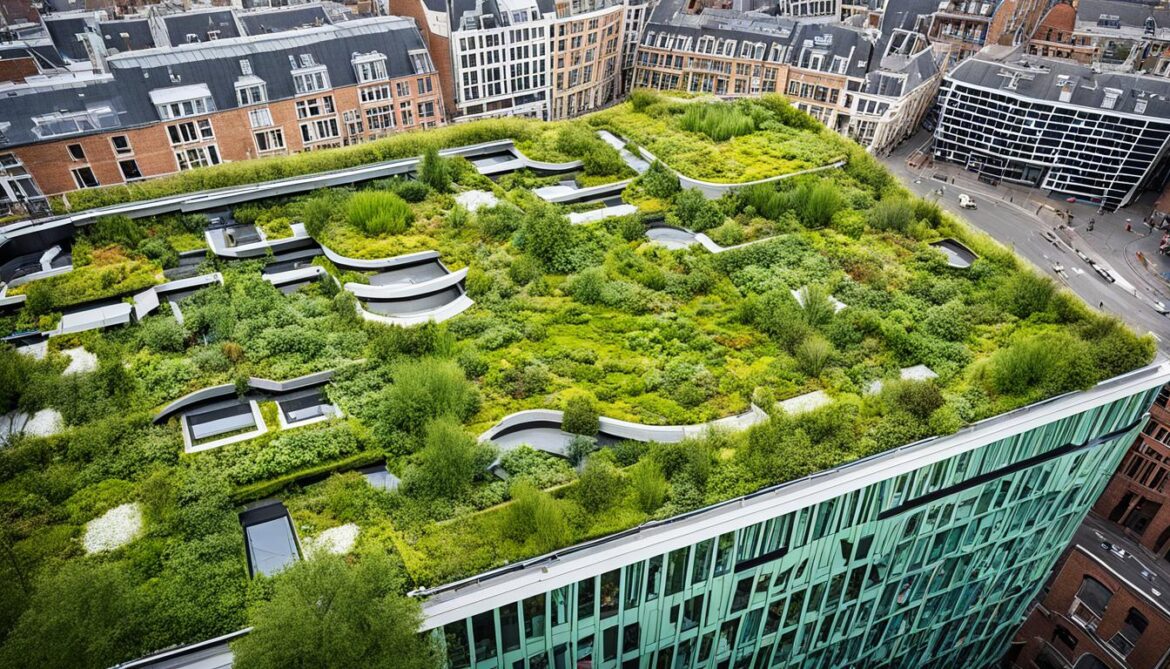
Through these conservation efforts, Belgium is laying the foundation for a sustainable future that values and protects its rich natural heritage. By prioritizing conservation and engaging the public, Belgium sets a positive example for other countries and contributes to global biodiversity conservation.
The Importance of Preserving Belgium’s Natural Habitats
Preserving Belgium’s natural habitats is essential for the survival of its diverse range of animal and plant species. These habitats provide ecosystem services such as carbon sequestration, air and water purification, and maintenance of healthy ecosystems. The economic value of these services is estimated to be between EUR 800 million to 1.2 billion. Conserving natural habitats not only protects species but also benefits society as a whole.
Ecosystem Services Provided by Natural Habitats
Belgium’s natural habitats play a vital role in providing ecosystem services that are crucial for sustaining life on our planet. These services include:
- Carbon sequestration: Natural habitats, such as forests and wetlands, act as carbon sinks, absorbing and storing carbon dioxide from the atmosphere. This mitigates climate change by reducing greenhouse gas emissions.
- Air and water purification: Natural habitats filter air pollutants, improving air quality for human and animal populations. They also serve as natural water filters, preventing pollution and improving water quality in rivers, lakes, and groundwater.
- Maintenance of healthy ecosystems: Natural habitats provide food, shelter, and breeding grounds for a wide variety of species, contributing to the overall health and balance of ecosystems. This promotes biodiversity and ensures ecological resilience.
By conserving natural habitats, Belgium can continue to enjoy these valuable ecosystem services and ensure a sustainable future for both nature and society.
Economic Value of Ecosystem Services
The ecosystem services provided by Belgium’s natural habitats also have significant economic value. A study estimated the economic value of these services to be between EUR 800 million to 1.2 billion, highlighting their contribution to the country’s economy.
“The economic benefits of preserving natural habitats extend far beyond their intrinsic value. They directly impact industries such as tourism, agriculture, and fisheries, and indirectly contribute to human health and well-being.”
Conserving natural habitats not only protects species and ecosystems but also generates economic benefits, demonstrating the interconnectedness of environmental conservation and socioeconomic development.
The Role of Natural Habitats in Biodiversity Conservation
Natural habitats serve as home to a wide variety of animal and plant species, supporting biodiversity and promoting species survival. Protecting these habitats is essential for maintaining healthy populations of native species and preventing further biodiversity loss.
The graph below illustrates the relationship between natural habitat conservation and biodiversity conservation:

| Natural Habitats | Biodiversity Conservation |
|---|---|
| Preserving intact forests | Protecting endangered species such as the European otter and the wildcat |
| Conserving wetlands | Supporting breeding and migration of waterfowl and aquatic species |
| Restoring grasslands | Ensuring habitat availability for pollinators and grassland-dependent species |
By safeguarding Belgium’s natural habitats, we can safeguard the rich biodiversity that relies on them for survival and maintain the delicate balance of ecosystems.
Environmental Protection and Eco-Friendly Initiatives in Belgium
Belgium is dedicated to environmental protection and has taken significant steps to promote eco-friendly initiatives in support of biodiversity conservation. One key initiative is the Natura 2000 network in Flanders, which plays a vital role in preserving natural habitats and providing a range of benefits for the environment.
The Natura 2000 network is a network of protected areas that spans across Europe, including several sites in Belgium. These areas are carefully chosen to safeguard unique species, habitats, and ecosystems. They contribute to biodiversity conservation by ensuring the protection and restoration of valuable natural areas.
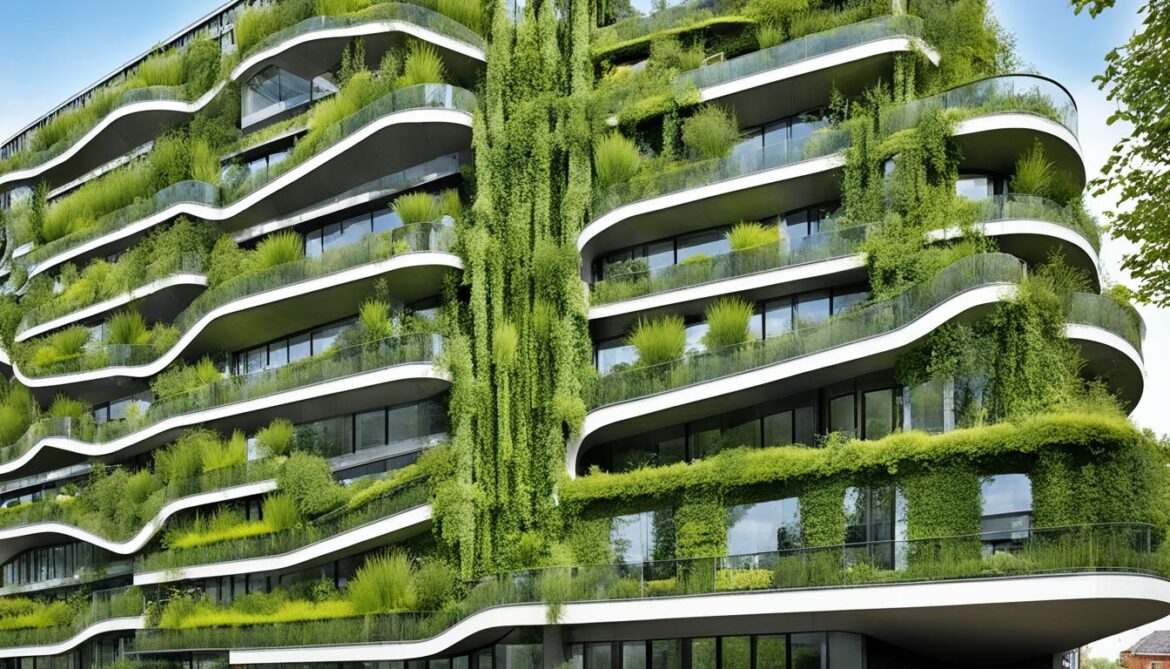
“The Natura 2000 network is a cornerstone of Belgium’s environmental protection efforts. By preserving natural habitats, we are safeguarding the future of countless plant and animal species.”
In addition to preserving habitats, eco-friendly initiatives in Belgium also focus on reducing environmental impact. Measures such as carbon dioxide storage, air pollution reduction, and water purification are integral components of the country’s efforts to combat climate change and protect natural resources.
Belgium’s commitment to environmental protection is further reinforced by the National Biodiversity Strategy. This comprehensive strategy sets quantitative targets for the establishment of protected areas and the restoration of ecosystems. It serves as a roadmap for Belgium’s conservation efforts, promoting sustainable practices and ensuring the preservation of biodiversity for future generations.
Continued efforts to align with European Union biodiversity strategies and involve stakeholders are crucial for effective environmental protection in Belgium. These collaborative approaches not only strengthen conservation initiatives but also foster a sense of shared responsibility and engagement in preserving the country’s natural heritage.
Eco-Friendly Initiatives in Action
Belgium’s commitment to environmental protection and eco-friendly initiatives can be seen in various projects and programs. The following examples highlight the country’s dedication to preserving biodiversity and promoting sustainable practices:
- The Natura 2000 network in Flanders: This network of protected areas ensures the preservation of habitats and promotes sustainable land management practices.
- The National Biodiversity Strategy: This comprehensive strategy sets quantitative targets for the establishment of protected areas and ecosystem restoration.
- Collaborative efforts with the European Union: Belgium actively participates in EU initiatives and aligns its policies with EU biodiversity strategies to enhance conservation efforts.
- Involvement of stakeholders: Belgium recognizes the importance of involving various stakeholders, including government agencies, researchers, conservation organizations, and the public, to ensure the success of environmental protection and biodiversity conservation initiatives.
With its strong focus on environmental protection and eco-friendly initiatives, Belgium is making significant strides in biodiversity conservation. By prioritizing sustainable practices and involving stakeholders, the country is contributing to global efforts to protect the environment and create a more sustainable future for all.
Policy Setting for Biodiversity Conservation in Belgium
Environmental policy in Belgium is primarily the responsibility of regional governments, with the federal level having some competencies. The National Biodiversity Strategy, adopted by the Interministerial Conference for the Environment, sets the framework for biodiversity conservation in Belgium.
Each region, including Flanders, Brussels, and Wallonia, has its own strategies and action plans to implement biodiversity commitments. Collaboration between the federal government, regions, and communities is necessary for a cohesive approach to biodiversity conservation.
Regional Competence
“Regional governments in Belgium have a key role to play in environmental policy and biodiversity conservation. They have the necessary regional competence to address specific regional challenges and adapt conservation strategies accordingly.”
National Biodiversity Strategy
“The National Biodiversity Strategy is a crucial instrument in guiding biodiversity conservation efforts. It provides a comprehensive framework for setting conservation targets, prioritizing actions, and coordinating efforts across regions and stakeholders.”
Collaboration for Conservation
“Collaboration between the federal government, regions, and communities is essential for managing biodiversity effectively. By working together and sharing expertise, resources, and best practices, we can ensure a cohesive and coordinated approach to safeguarding Belgium’s natural heritage.”
Regional Strategies and Action Plans
“Each region in Belgium develops its own strategies and action plans to implement biodiversity commitments. This approach allows for targeted conservation efforts that address regional-specific challenges and prioritize conservation actions.”
| Region | Strategy | Action Plans |
|---|---|---|
| Flanders | Strategic Plan for Biodiversity | Regional Action Plan for Nature Conservation |
| Brussels | Brussels Regional Biodiversity Plan | Biodiversity Action Plan for Brussels |
| Wallonia | Walloon Biodiversity Strategy | Wallonian Action Plan for Nature |
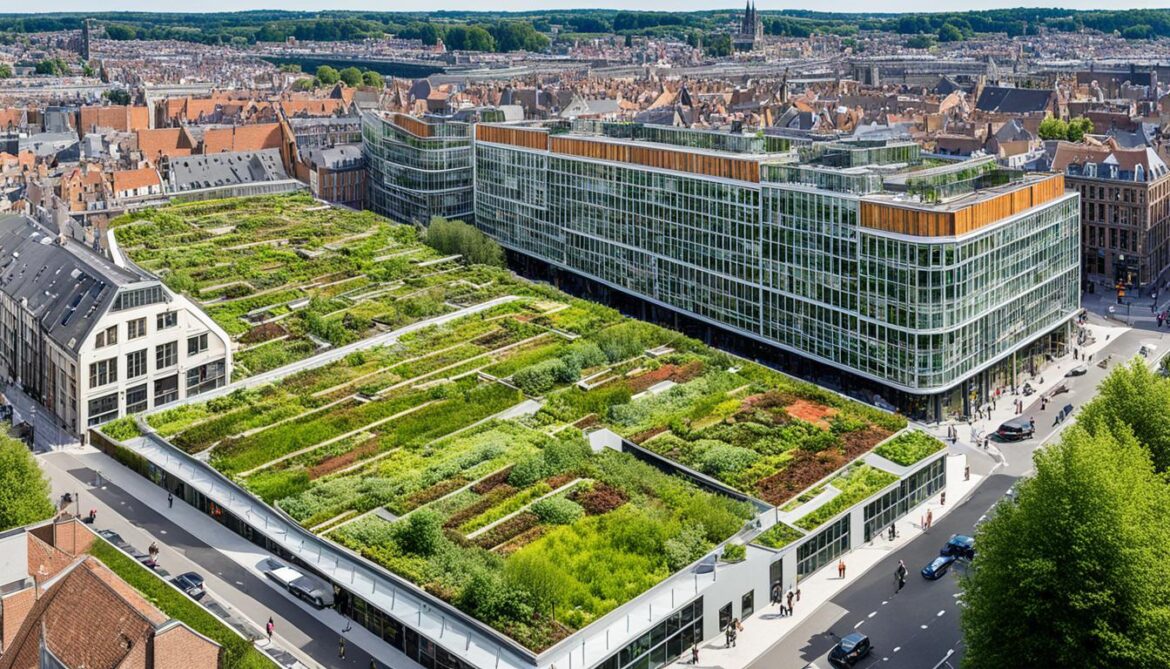
Working together, Belgium’s federal government, regions, and communities ensure a unified approach to biodiversity conservation, guided by the National Biodiversity Strategy. The regional strategies and action plans further reinforce this commitment, ensuring targeted and tailored conservation efforts across the country.
Implementation of Green Infrastructure in Belgium
Belgium has made significant progress in implementing green infrastructure, recognizing its importance in supporting biodiversity conservation and fostering sustainable development. Green infrastructure refers to interconnected networks of natural and semi-natural areas that provide a range of ecosystem services, such as habitat provision, flood mitigation, and climate regulation.
One notable initiative in Belgium is the Natura 2000 network, a cornerstone of green infrastructure. It consists of protected areas designated under the European Union’s Birds Directive and Habitats Directive. The network encompasses diverse habitats, including forests, wetlands, grasslands, and coastal areas, which support a wide array of plant and animal species. The Natura 2000 network plays a crucial role in conserving biodiversity and protecting vulnerable species, ensuring their long-term survival.
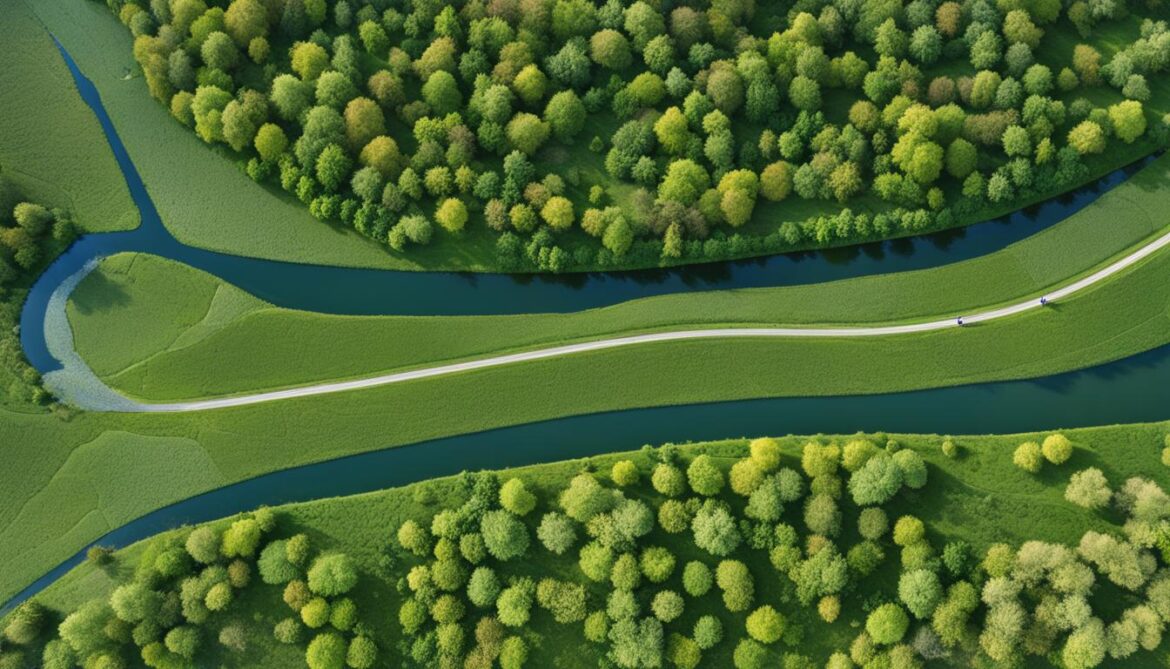
In addition, Belgium’s commitment to urban greening is evident through initiatives such as the “Nature in your neighbourhood” program in Flanders. This program promotes greening initiatives in urban areas, encouraging citizens to create green spaces and engage with nature. By incorporating green elements into cities, such as parks, green roofs, and vertical gardens, urban greening enhances the quality of urban life, improves air and water quality, and provides valuable habitats for wildlife.
The Hoge Kempen National Park is an exemplary showcase of balancing economic development with biodiversity objectives. The park, located in the province of Limburg, covers over 57 square kilometers and demonstrates the harmonious integration of recreation, tourism, and nature conservation. Visitors can explore its diverse landscapes, including heathlands, pine forests, and lakes, while respecting the park’s ecological sensitivities.
The implementation of urban greening projects and restoration efforts across Belgium contributes to the development of a robust green infrastructure network. By prioritizing the preservation of natural areas, promoting biodiversity-rich landscapes, and embracing sustainable land-use practices, Belgium strengthens its resilience to environmental challenges while enhancing the well-being of its citizens.
To showcase the progress and achievements in the implementation of green infrastructure in Belgium, the following table summarizes key initiatives and their associated benefits:
| Green Infrastructure Initiative | Benefits |
|---|---|
| Natura 2000 network | – Conservation of biodiversity – Protection of vulnerable species – Ecosystem services provision |
| “Nature in your neighbourhood” program | – Promotion of urban greening – Improved quality of urban life – Habitat creation for urban wildlife |
| Hoge Kempen National Park | – Sustainable integration of recreation and nature conservation – Preservation of diverse landscapes – Enhanced ecological education and awareness |
| Urban greening projects and restoration efforts | – Improved air and water quality – Climate change adaptation – Enhanced urban biodiversity |
Through these initiatives, Belgium is leading the way in establishing a comprehensive and interconnected green infrastructure network. The country recognizes the value of incorporating nature into both urban and rural landscapes, creating a sustainable and resilient environment for future generations.
Mainstreaming Green Infrastructure in Belgium
Belgium is actively mainstreaming green infrastructure to promote nature conservation and enhance spatial planning. Through various policies and initiatives, the country is prioritising the integration of nature considerations into urban development.
The Flemish Ecological Network plays a crucial role in connecting natural areas and promoting ecological quality. It aims to enhance the connectivity of habitats and ensure the conservation of key species. By establishing ecological corridors, Belgium facilitates the movement of wildlife and promotes biodiversity conservation.
Spatial planning policies in Belgium are also aligned with nature conservation goals. The development of green-blue networks is a key focus, combining green spaces with aquatic environments to create a harmonious landscape. This approach not only supports biodiversity but also contributes to improving the urban environment, providing opportunities for recreation and enhancing the quality of life for residents.
Brussels, the capital city of Belgium, has taken significant steps in mainstreaming green infrastructure. It has established a regional ecological network that connects and protects important natural areas within the urban landscape. The city has implemented various green infrastructure projects, such as the creation of urban parks and nature reserves, ensuring that nature remains an integral part of the cityscape.
The Walloon region is also actively strengthening its nature conservation efforts. It focuses on implementing the Walloon Nature Network, an interconnected system of protected areas that aim to preserve and enhance biodiversity. By combining conservation measures with sustainable land use practices, the region ensures the long-term viability of its ecosystems.
By mainstreaming green infrastructure and nature conservation, Belgium is prioritising the sustainability of its urban areas and the protection of its natural heritage. These initiatives contribute to a more resilient and harmonious relationship between human development and the environment.
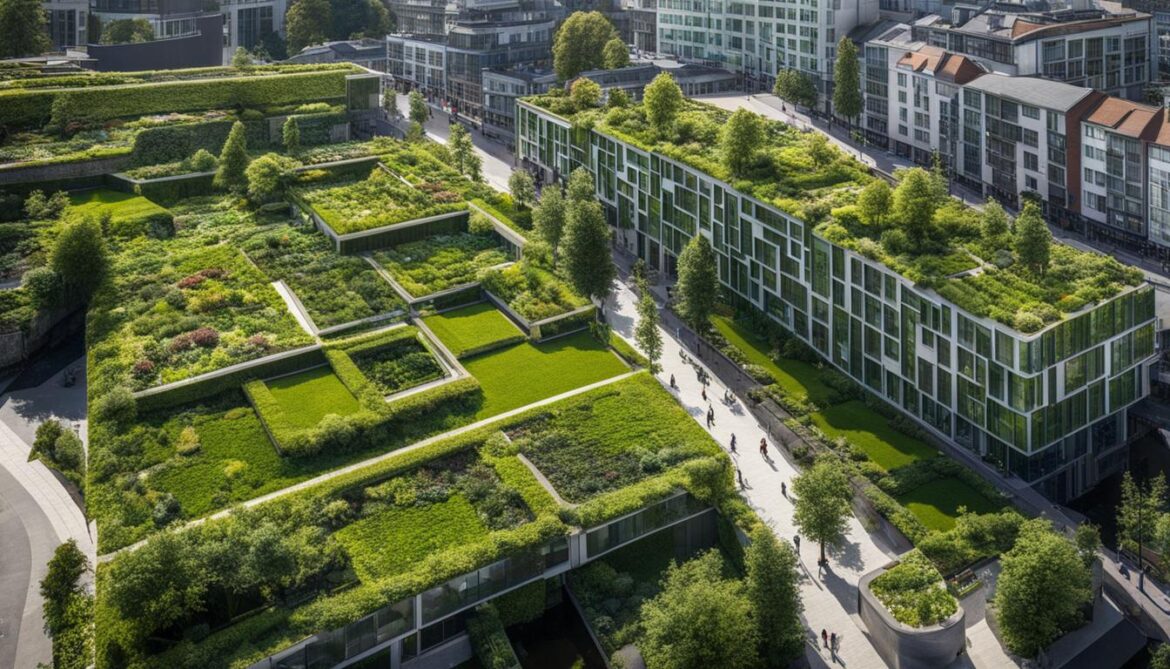
Conclusion
Belgium’s biodiversity faces significant threats, but conservation efforts, protected areas, sustainable management practices, and public engagement are crucial for its preservation. By prioritising biodiversity conservation, Belgium contributes to global efforts to protect our planet’s natural heritage and ensure a sustainable future. Preserving natural habitats and implementing eco-friendly initiatives support biodiversity conservation by providing safe havens for diverse species and maintaining ecosystem services.
Continued collaboration between stakeholders, such as government agencies, conservation organizations, researchers, and local communities, is essential for effective conservation strategies. Together, they can work towards preserving and restoring natural habitats, implementing sustainable land and water management practices, and raising public awareness about the importance of biodiversity conservation.
Belgium’s commitment to environmental protection is evident through initiatives such as the Natura 2000 network and the National Biodiversity Strategy. These efforts aim to align with EU biodiversity strategies, involve stakeholders, and ensure a cohesive approach towards environmental conservation.
By safeguarding Belgium’s biodiversity through conservation, environmental protection, and sustainability measures, the country not only protects its unique animal and plant species but also contributes to the global goal of creating a more sustainable and biodiverse planet.




